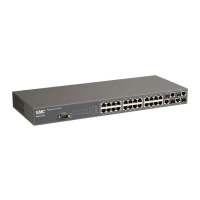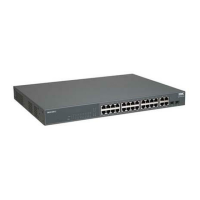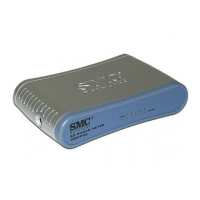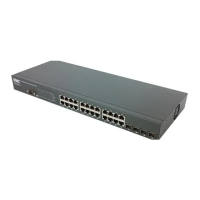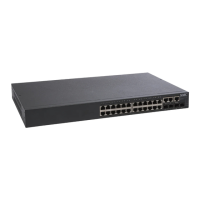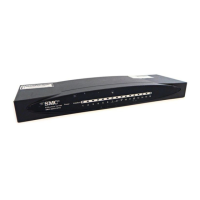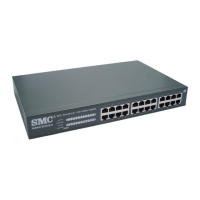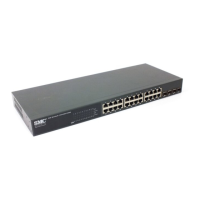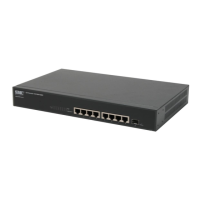SPANNING
-
TREE
COST
29-17
Default Setting
By default, the system automatically detects the speed and duplex mode
used on each port, and configures the path cost according to the values
shown below. Path cost “0” is used to indicate auto-configuration
mode.
Command Mode
Interface Configuration (Ethernet, Port Channel)
Command Usage
• This command is used by the Spanning Tree Algorithm to determine
the best path between devices. Therefore, lower values should be
assigned to ports attached to faster media, and higher values assigned
to ports with slower media.
• Path cost takes precedence over port priority.
• When the spanning-tree pathcost method (page 29-9) is set to short,
the maximum value for path cost is 65,535.
Example
Table 29-3 Default STA Path Costs
Port Type Link Type
IEEE 802.1D-1998
*
* Use the spanning-tree pathcost method command on page 29-9 to set the path cost
method.
IEEE 802.1w-2001
*
Gigabit
Ethernet
Full Duplex
Trunk
4
4
10,000
5,000
10G Ethernet Full Duplex
Trunk
2
2
1000
500
Console(config)#interface ethernet 1/5
Console(config-if)#spanning-tree cost 50
Console(config-if)#
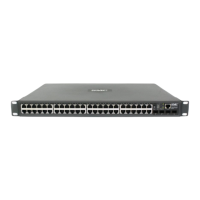
